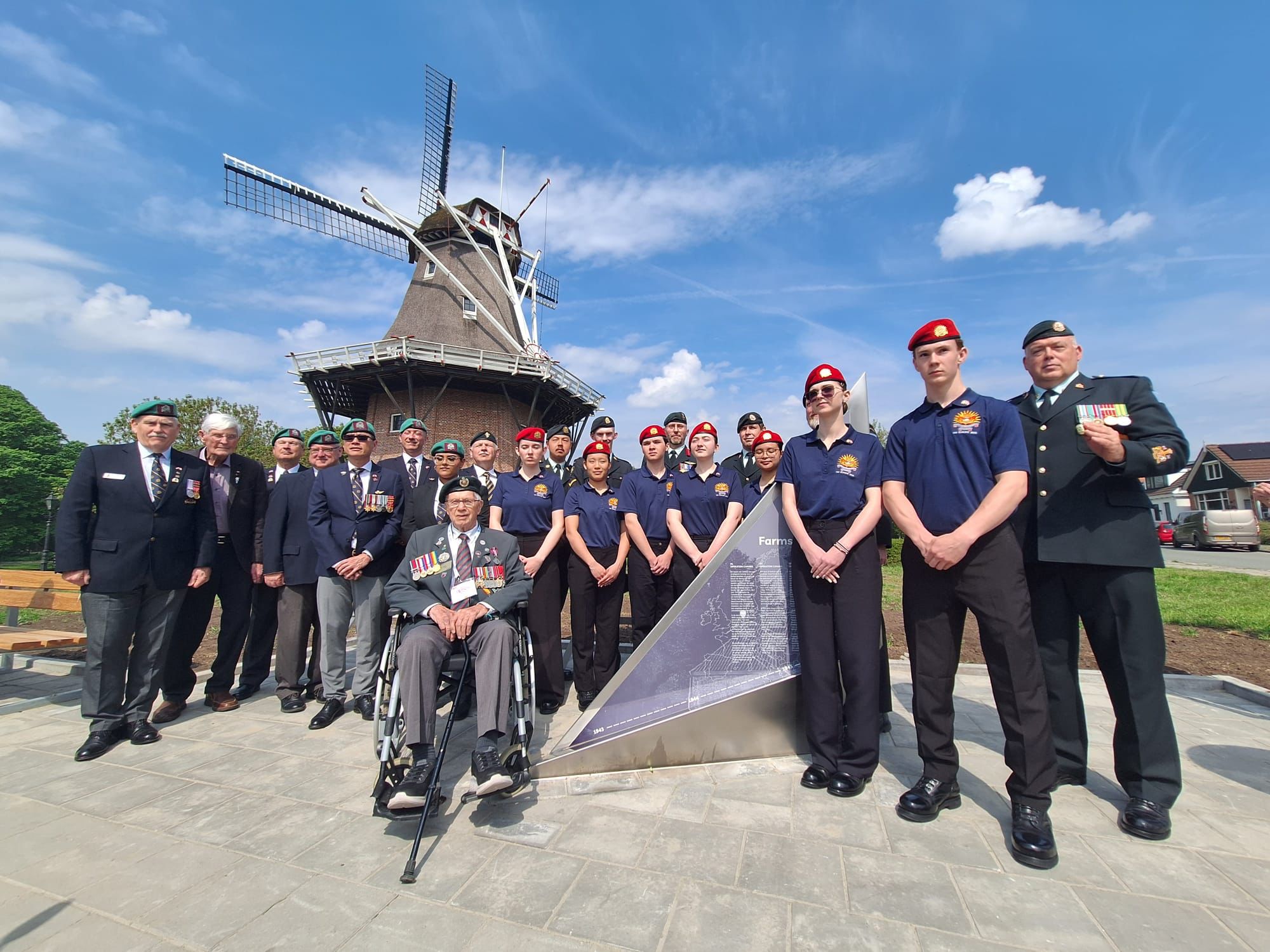In the last weeks, several Vectors of Memory were unveiled in the Netherlands, Luxembourg and France as part of the Liberation Route Europe hiking trails project. Designed by renowned architect Daniel Libeskind, these symbolic markers commemorate people, places and stories from the Second World War that shaped Europe’s path to liberation.
Voorst, Netherlands
On April 3, the Crossroad Vector Operation Cannonshot was unveiled in Voorst, marking the completion of the LRE Canadian Trail Veluwe.
The vector commemorates a pivotal moment in April 1945, when Allies launched Operation Cannonshot, an essential step in the final phase of the Netherlands’ liberation. On April 11, 1945, Canadian forces crossed the IJssel at Gorssel and Wilp. While the initial crossing was surprisingly smooth—achieved in just seven minutes without enemy fire—fierce fighting soon followed near Voorst and Klarenbeek. The construction of the so-called Poco-Poco Bridge became a turning point in the campaign, enabling the push toward Apeldoorn and contributing decisively to the broader liberation effort.
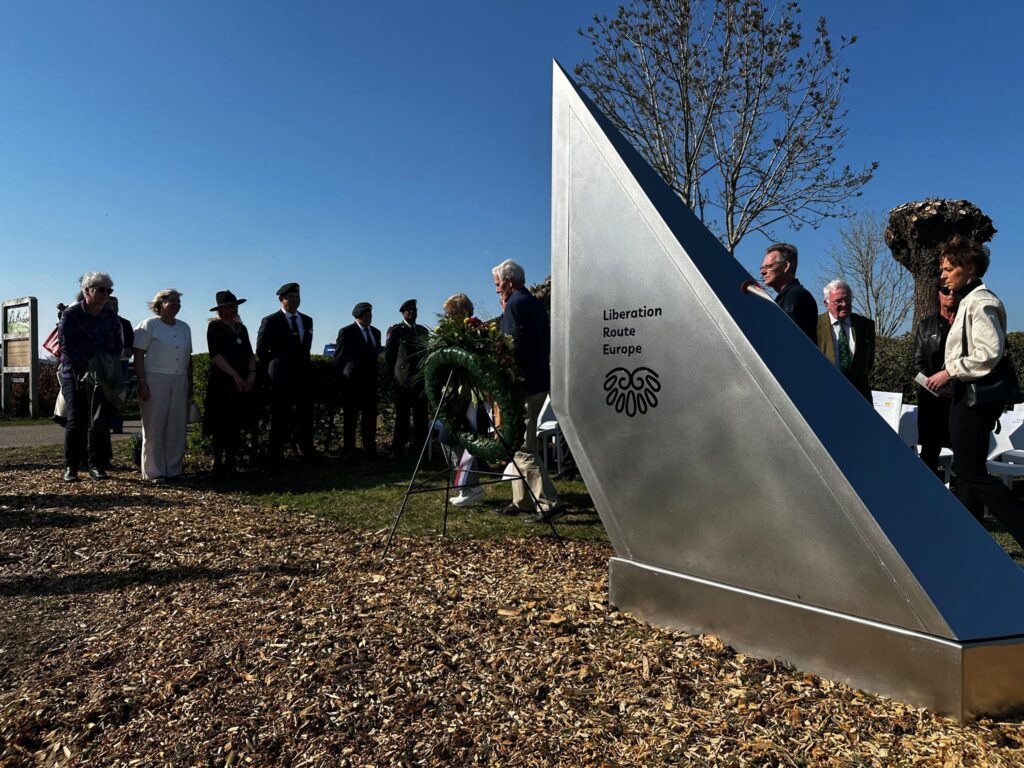
Zoutkamp, Netherlands
A Wall Vector was unveiled on April 6 at the Fisheries Museum in Zoutkamp, officially adding the harbour town to the Liberation Route Network. Unveiled by Aukje Sterkenbrug, the vector commemorates Zoutkamp’s role in the closing weeks of the war.
On the night of 14-15 April 1945, a group of SD and SS members fled from Groningen to Zoutkamp, hoping to escape to Germany through Schiermonnikoog. Despite mechanical failures and local resistance, they eventually got to the island, where they remained in hiding until the end of May. Reflecting on those days as a child, Aukje shared a moving memory during the ceremony: “Nowadays, we take freedom for granted, but back then it was a precious and uncertain thing.”
LREF Program Manager Joël Stoppels emphasized the importance of sharing such stories, especially “in these uncertain times”.
Kornwerderzand, Netherlands
A new Crossroad Vector was unveiled on 18 April at the Kazemattenmuseum on the Afsluitdijk, marking 80 years since Canadian forces broke through German defences at this strategic location.
As one of the last open routes into North Holland, the Afsluitdijk had been heavily fortified with bunkers and anti-aircraft guns. With support from local resistance, the Canadians launched a precise artillery and air assault on 18 April 1945, defeating the German troops swiftly and without suffering losses. The victory paved the way for the liberation of Friesland and the northern Netherlands. The new vector now marks the very spot where these events unfolded.
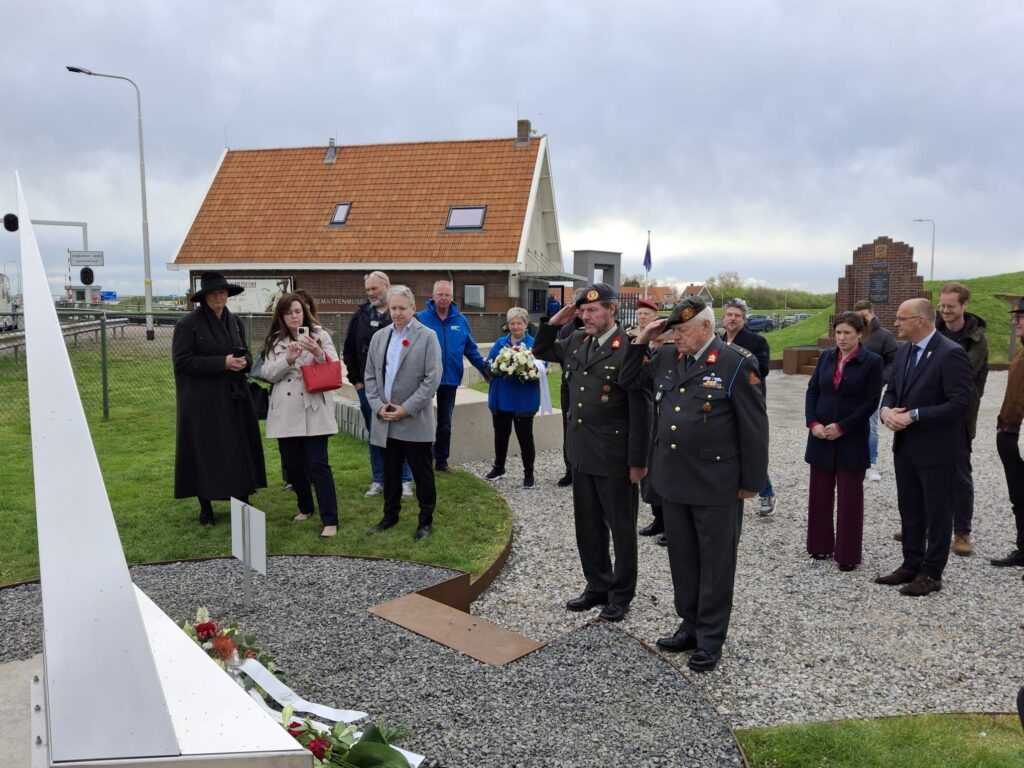
Eemsdelta, Netherlands
On 2 May, another Crossroad Vector was unveiled in the municipality of Eemsdelta to commemorate the final battle on Dutch soil. In the spring of 1945, In the spring of 1945, Canadian troops fought fiercely to liberate the port city of Delfzijl, still under heavy German control. Among the guests was 100-year-old veteran Jim Parks, who was injured during the battle and returned to Delfzijl to take part in the ceremony.
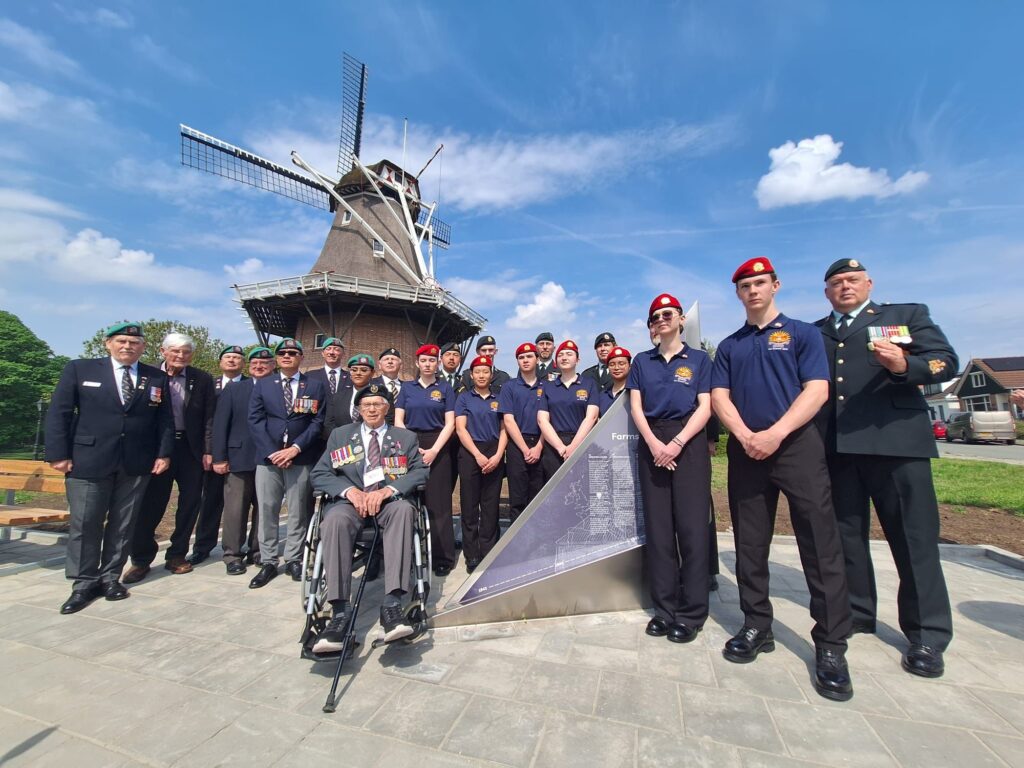
Schumannseck, Luxembourg
At Schumannseck, in the Parc Naturel de la Haute-Sûre, a National Memorial Site was unveiled on May 16th. Schumannseck was the scene of fierce fighting during the Battle of the Bulge in the winter of 1944-1945. The vector commemorates the thousands who lost their lives there.
The unveiling brought together local, national and European representatives, featuring several speeches and a powerful contribution by students from the Lycée du Nord.
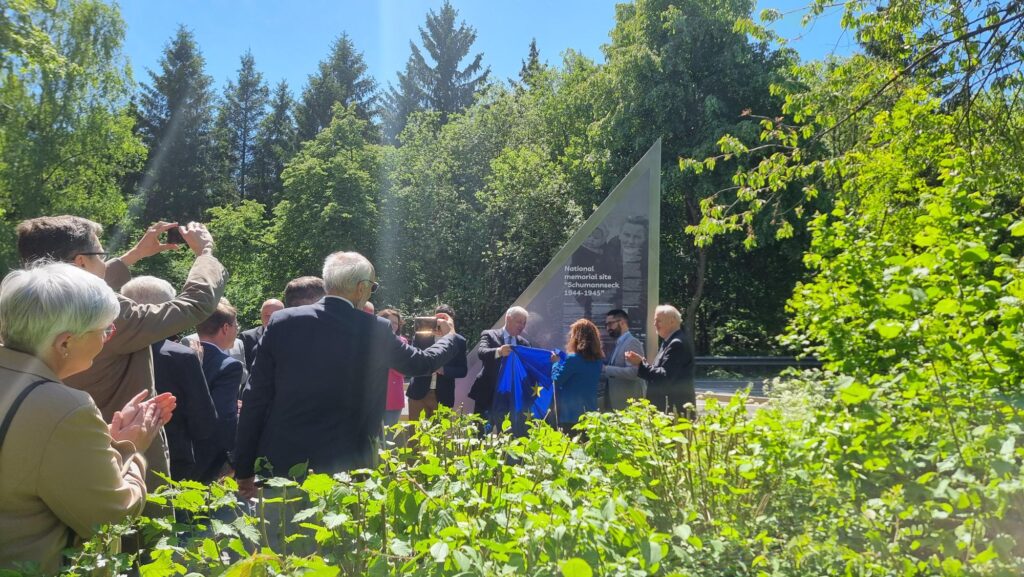
Calais, France
The first Vector of Memory in the Hauts-de-France region was unveiled on 21 May, in front of the Musée Mémoire 39–45 in Calais. This new addition marks an important milestone in preserving and sharing local wartime history, expanding the Liberation Route Europe across this region in France.
Arromanches-les-Bains, France
Looking ahead, a Wall Vector will be inaugurated on June 7, 2025, in Arromanches-les-Bains, on the 11th anniversary of the Liberation Route Europe. This will be the first Wall Vector in France, placed symbolically in the town where the project was launched in June 2014. The unveiling will celebrate the strong historical and emotional connection between LRE and Arromanches.
Each of these new Vectors strengthens the Liberation Route Europe’s mission to connect historic sites and local communities across the continent. As the network continues to grow, these markers not only honour the memory of the past but also invite future generations to reflect on the values of freedom, resilience, and peace.
